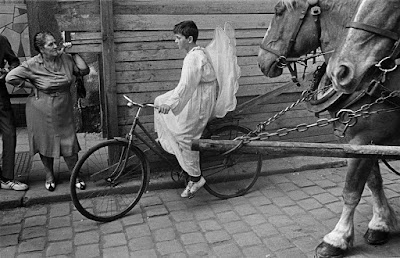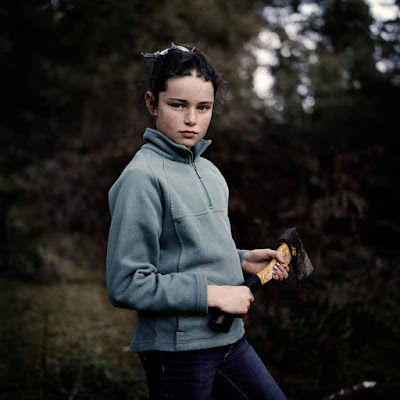Exhibitions: Berlin
Josef Koudelka - Invasion/Exiles/Wall
“When I left Czechoslovakia, I was discovering the world around me. What I needed most was to travel so that I could take photographs.” Josef Koudelka

France, 1967 © Josef Koudelka / Magnum Photos
This exhibition features three significant stages of work by Magnum photographer Josef Koudelka, his first dedicated exhibition in Germany for nearly 30 years. With around 120 photographs and projections this exhibition ranges from the Soviet occupation of Koudelka's homeland in 1968 to his time in exile. The exhibition is curated by Xavier Barral in cooperation with Sonia Voss and organised in partnership with the Nederlands Fotomuseum in Rotterdam.
Czechoslovakia, 1968 © Josef Koudelka / Magnum Photos
Czechoslovakia, 1968 © Josef Koudelka / Magnum Photos
Czechoslovakia, 1968 © Josef Koudelka / Magnum Photos
C/O Berlin Foundation, Amerika Haus, HardenbergstraBe 22-24, 10623 Berlin
Daro Sulakauri - Black Gold
(C) Daro Sulakauri
Georgian photographer Daro Sulakauri’s photo essay on the mining town of Chiatura in Georgia is absolutely captivating. Sulakauri’s empathy with the miners and their families is palpable and her compositions take you right to the heart of this mining community.
Once a bustling manganese ore mining town, since the collapse of the Soviet Union these miners, who toil for 12 hours a day, earn less than USD $300 a month. It is a brutal job in a harsh region where there are few creature comforts.

(C) Daro Sulakauri
(C) Daro Sulakauri
(C) Daro Sulakauri
(C) Daro Sulakauri
(C) Daro Sulakauri
You can read the full story on National Geographic's PROOF.
Evgenia Arbugaeva - Amani

(C) Evgenia Arbugaeva
Great Weekend Reading:
Photobooks - Australian photobook specialists and noted academics Doug Spowart and Vicky Cooper recently showcased a range of books from Australia and New Zealand at the Vienna Photo Book Festival with great success. Check out their blog posts at WotWeDid.
How Some Photographers Make a Living - World Press Photo
(C) Evgenia Arbugaeva
This photo essay, by one of my favourite photographers Evgenia Arbugaeva, is in complete contrast to the previous subject matter of this Siberian artist whose Weather Man and Tiksi series I’ve written about. But her visual signature is unmistakable and immediately I'm transported to another world. There's something so rich and hauntingly beautiful about her images that captivates me.
This photo essay, by one of my favourite photographers Evgenia Arbugaeva, is in complete contrast to the previous subject matter of this Siberian artist whose Weather Man and Tiksi series I’ve written about. But her visual signature is unmistakable and immediately I'm transported to another world. There's something so rich and hauntingly beautiful about her images that captivates me.
In 2014 Arbugaeva turned her lens on Tanzania and the Amani Hill Research Station to “bring back the atmosphere of this dark, magical place,” as she told National Geographic’s Jeremy Berlin. This station is located in the remote Usambara Mountains where Arbugaeva worked with anthropologist Wenzel Geissler, to capture this “hidden world”. It’s a wonderful visual story told beautifully by Arbugaeva. Berlin’s story is equally engaging. You can read it and see more images here.
(C) Evgenia Arbugaeva
(C) Evgenia Arbugaeva

(C) Evgenia Arbugaeva
Great Weekend Reading:
How Some Photographers Make a Living - World Press Photo































































